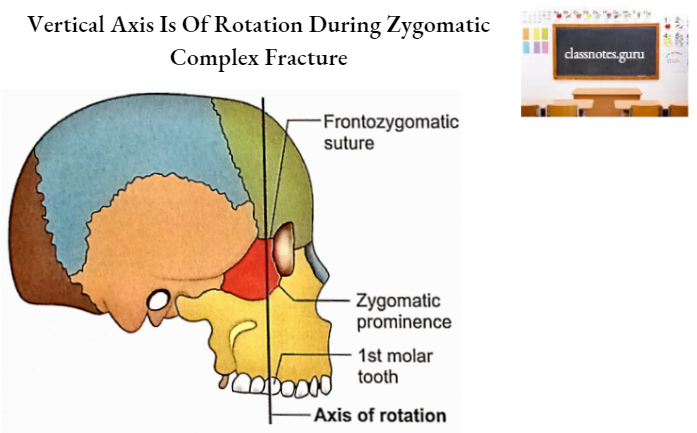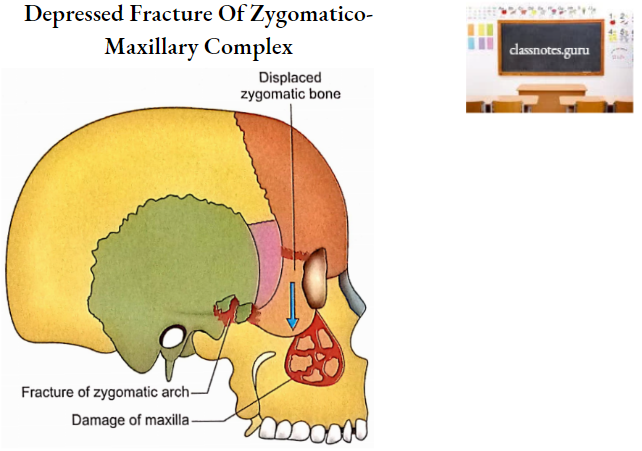Zygomatic Bones
Zygomatic Bones Terminology
The term zygomatic is derived from the Greek word ‘zyg’ which means ‘yoke’. Hence the zygomatic refers to a bone that is shaped like a yoke uniting the frontal, maxilla, and temporal bones.
- The zygomatic bone is also called ‘malar bone’ because it forms prominence of the cheek which is called ‘mala’ in Latin.
- The term ‘zygoma’ is used by clinicians which includes both ‘zygomatic bone’ and ‘zygomatic arch’. Anatomists use the term ‘zygoma’ for ‘zygomatic arch’.
- The term ‘zygomatic complex’ implies to zygomatic bone and other bones adjacent to it, i.e. maxilla and the zygomatic process of frontal bone.
Zygomatic Bones Location
Zygomatic bones are present in the upper and lateral parts of the face.
Zygomatic Bones Features And Attachments
Each zygomatic bone has three surfaces. (lateral, temporal, and orbital), five borders (anterosuperior, anteroinferior, postero- superior, posteroinferior and posteromedial) and two processes (frontal and temporal).
Zygomatic Bones Surfaces
1. Lateral Surface
- It is convex.
- Zygomaticofacial foramen is present near the orbital (anterosuperior) border. It transmits zygomaticofacial nerve and vessels.
- The area below the zygomaticofacial foramen gives origin to two muscles:
- Zygomaticus major (posteriorly)
- Zygomaticus minor (anteriorly).

2. Temporal Surface
- Its anterior part is rough for articulation with the maxilla.
- Its posterior larger part is smooth and forms the anterior boundary of the temporal fossa.
- Close to the posteroinferior border, this surface provides attachment to the masseter muscle.
- The zygomaticotemporal foramen present on this surface transmits the zygomaticotemporal nerve and vessels.

3. Orbital Surface
- It partly contributes to the lateral wall and floor of the orbit.
- It possesses zygomatic orbital foramina which transmit:
- Zygomaticotemporal and zygomaticofacial nerves.
- Zygomatic branches of the lacrimal artery.
Zygomatic Bones Borders
1. Anterosuperior Border
- This is also called the orbital border.
- It provides attachment to the orbital septum.
2. Anteroinferior Border
- This is also called the maxillary border.
- Levator labii superioris arises partly from this border near the orbital border.
3. Posterosuperior Border
- It is also called the temporal border.
- Temporal fascia is attached to this border.
4. Posteroinferior Border
Masseter muscle originates from this border.
5. Posteromedial Border
It articulates with the greater wing of the sphenoid above and the maxilla below.
Zygomatic Bones Processes
1. Frontal Process
- It articulates with the zygomatic process of the frontal bone (to form
frontozygomatic suture) superiorly and greater wing of sphenoid bone posteriorly. - Whitnall’s tubercle is present on its orbital aspect about 1 cm below the frontozygomatic suture. The following structures are attached to this tubercle:
- Lateral check ligament.
- Lateral palpebral ligament.
- Suspensory ligament of the eyeball.
- Aponeurosis of levator palpebrae superioris.
2. Temporal Process
- It is directed backward.
- It articulates with the zygomatic process of the temporal bone to complete the zygomatic arch.
- Its inferior margin and medial surface provide attachment to the masseter muscle.
Zygomatic Bones Ossification
Zygomatic bone ossifies in the membrane.
- Usually single centre appears at the age of the 8th week of intrauterine life.
- Sometimes a horizontal suture divides the bone into an upper larger and a lower smaller segments.
Zygomatic Bones Applied Anatomy
- Malar flush is the redness of the skin over zygomatic prominence. This is observed in tuberculosis, mitral stenosis (narrowing of the left atrioventricular orifice), and rheumatic fever.
- The zygomatic bone is of great clinical importance due to its functional significance
- It protects the globe of the eye.
- It gives origin to the masseter muscle.
- It transmits part of the masticatory forces to the cranium
- It absorbs the force of an impact before it reaches the brain.
- When a rapidly moving object hits the zygomatic bone, a comminuted fracture results in the displacement of bone fragments.
- Tripod fracture means fracture of the zygomatic complex. The zygomatic bone is like a legged stool.
- The seat of the stool is the main portion of the zygomatic bone while the legs are the frontal process, inferior orbital margin, and zygomatic buttress.
- The frontozygomatic suture, zygomatic prominence, zygomatic buttress, and 1st molar tooth, all lie in the same vertical line.
- In the majority of cases, the zygomatic complex fracture is associated with rotation along this axis.
- Zygomatic bone forms one of the principal means by which occlusal stress is transmitted from the maxilla and spreads over the base of the skull.
- Fracture of the zygoma (zygomatic arch and zygomatic bone) is second among the most common fractures of the middle 3rd of the face.
- The junctions of the frontal and temporal processes of the zygomatic bone form important landmarks in the treatment of maxillofacial injuries.
- The periosteum and attachment of strong temporal fascia limit the displacement of zygomatic bone following injury.
- In a depressed fracture of the zygomaticomaxillary complex, there is the displacement of the zygomatic bone without its fracture.
- Le Fort 3 fracture of the face is a horizontal fracture just below the base of the skull. The fracture line passes laterally through frontozygomatic sutures.
- As there is a concurrent fracture of zygomatic arches, the maxillae, and zygomatic bones are separated from the rest of the skull.




